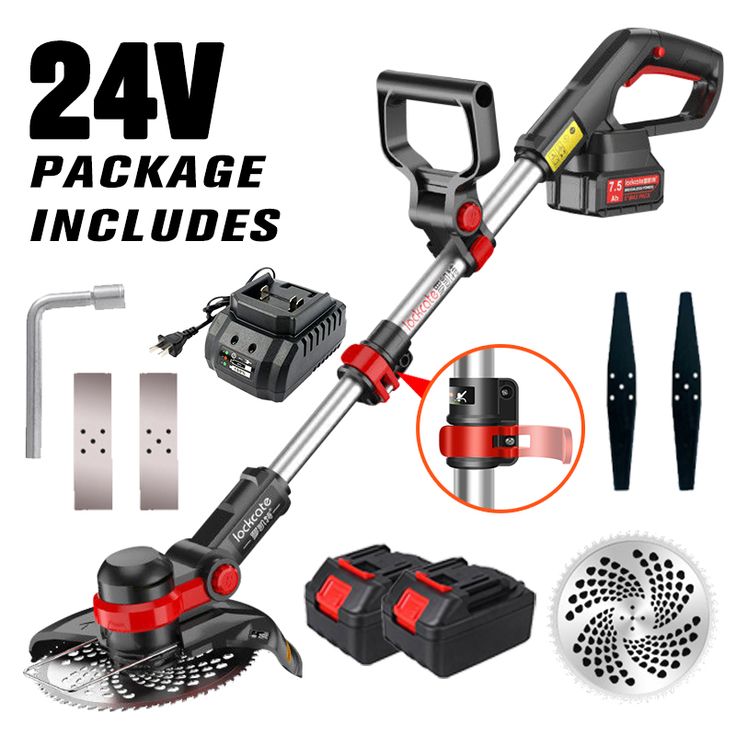When it comes to maintaining a pristine lawn, a string trimmer is an indispensable tool for tackling unruly weeds and achieving crisp edges. However, gardeners often face a fundamental choice: opt for the traditional power of a gas-powered trimmer or embrace the modern convenience of a battery-powered model. Both have distinct advantages and disadvantages, and the “best” choice ultimately depends on your specific yard size, trimming needs, and personal preferences. Understanding the key differences between these two types will help you make an informed decision.
Power Source and Performance
The most obvious difference lies in how they are powered, which directly impacts their performance characteristics.
- Gas-Powered String Trimmers:
- Engine: Typically use a 2-cycle or 4-cycle internal combustion engine, requiring a mix of gasoline and oil (for 2-cycle) or just gasoline (for 4-cycle).
- Raw Power: Generally offer superior raw power and torque, making them ideal for cutting through very thick, dense weeds, overgrown brush, and large areas. They are less likely to bog down under heavy loads.
- Unlimited Runtime: As long as you have fuel on hand, a gas trimmer can run continuously, which is a significant advantage for professional landscapers or homeowners with very large properties.
- Line Diameter: Can often accommodate thicker, more durable cutting lines (e.g., 0.095 inches or more), which are better for heavy-duty tasks.
- Battery-Powered String Trimmers:
- Motor: Utilize an electric motor powered by a rechargeable lithium-ion battery. Battery voltages typically range from 18V/20V up to 80V or more.
- Power Output: Modern battery technology has significantly closed the power gap. High-voltage cordless trimmers (40V and above) can deliver impressive cutting power, capable of handling most residential weeds and grass. While they might not match the peak power of the strongest gas models, they are more than sufficient for the vast majority of homeowner tasks.
- Runtime: Limited by battery charge. Runtimes vary based on battery voltage (V) and Amp-hour (Ah) rating, as well as the intensity of the work. For larger yards, multiple batteries or a fast charger might be necessary.
- Line Diameter: Can handle a good range of line diameters, though typically not as thick as the heaviest-duty gas models.
Convenience and User Experience
Beyond raw power, the day-to-day user experience differs significantly.
- Gas-Powered String Trimmers:
- Starting: Require a pull-cord start, which can sometimes be finicky, especially on cold days.
- Noise and Emissions: Significantly noisier and produce exhaust fumes, requiring proper ventilation and hearing protection.
- Maintenance: More involved maintenance, including fuel mixing, spark plug changes, air filter cleaning, and carburetor adjustments.
- Weight: Generally heavier than battery models, leading to more user fatigue during prolonged use.
- Battery-Powered String Trimmers:
- Starting: Instant, push-button start. No priming or pulling cords.
- Noise and Emissions: Much quieter and produce zero emissions, making them more pleasant to use and environmentally friendly.
- Maintenance: Very low maintenance. Simply charge the battery and keep the cutting head clean. No fuel storage issues.
- Weight: Typically lighter, especially lower voltage models, reducing user fatigue. However, high-voltage models with larger batteries can approach the weight of lighter gas trimmers.
- System Compatibility: Many brands offer battery systems where one battery can power multiple tools (trimmers, blowers, chainsaws), saving money and space.
Cost and Longevity
- Gas-Powered String Trimmers:
- Initial Cost: Often similar to or slightly higher than mid-range battery models.
- Operating Cost: Ongoing costs for fuel and oil.
- Longevity: With proper maintenance, professional-grade gas trimmers can last for many years.
- Battery-Powered String Trimmers:
- Initial Cost: Can be higher upfront, especially if purchasing batteries and a charger separately or opting for high-voltage systems.
- Operating Cost: Very low, primarily the cost of electricity for charging.
- Longevity: Battery lifespan is a consideration; batteries will degrade over time and eventually need replacement. The tool itself can be durable.
Which One is Right for You?
- Choose Gas if: You have a very large property (over 1/2 acre), frequently deal with extremely thick brush or woody weeds, or require continuous, uninterrupted runtime for commercial use.
- Choose Battery if: You have a small to medium-sized yard, prioritize convenience, low noise, zero emissions, and minimal maintenance, and are comfortable with battery runtimes (or have multiple batteries).
In conclusion, the choice between battery and gas string trimmers boils down to a trade-off between raw, continuous power and modern convenience. For most homeowners, the advancements in battery technology mean that cordless trimmers are now more than capable, offering a compelling, user-friendly alternative to their gas-powered predecessors.

